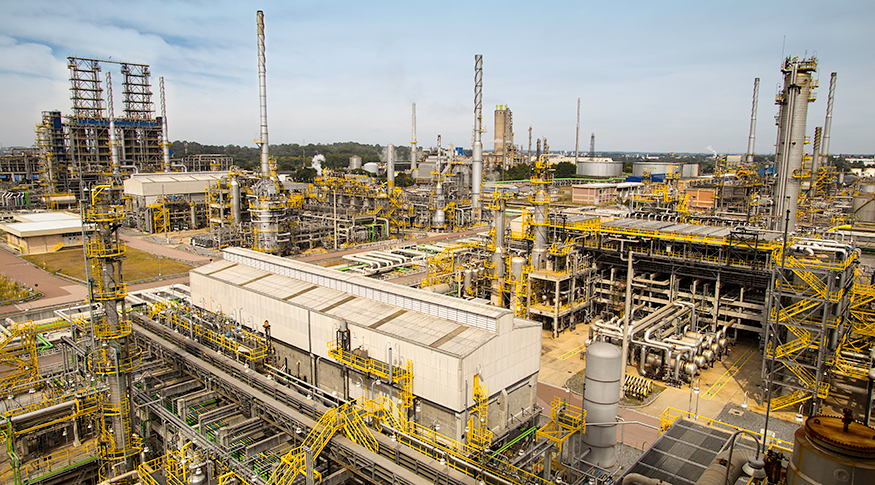IPP
Industry prices close 2021 with a rise of 28.39%, a record in the time series
February 01, 2022 09h00 AM | Last Updated: February 04, 2022 09h18 AM
 Eight activities closed the year with high prices, especially petroleum refining and biofuels - Photo: André Motta de Souza/Agência Petrobras
Eight activities closed the year with high prices, especially petroleum refining and biofuels - Photo: André Motta de Souza/Agência PetrobrasIndustrial sector inflation changed -0.12% in December 2021 compared to the previous month, the first negative result after 28 months. As a result, industrial prices closed 2021 with a cumulative high of 28.39%, a record for this indicator in the time series, which began in 2014. The data are from the Producer Price Index (IPP), released today (February 1) by the IBGE. The 2021 high was 9 percentage points (pp) above that of 2020.
According to Mr. Alexandre Brandão, analysis and methodology manager at the IBGE Industry Coordination, there are many variables that contributed to this behavior of prices in the Brazilian industry. "We could mention the exchange rate, whose depreciation reached almost 10%; the behavior of the market throughout the year, with considerable increases in the price of iron ore, crude oil, foods such as sugar and meat. We could also include the pandemic, which has still had an impact on production chains, in addition to the weather, since the winter was harsh and caused problems in sugar and coffee crops, for example”, lists the specialist.
Although it presented a record index in the year to date, the IPP showed a deceleration in the second half of the year. In June, the cumulative index for 2021 was 36.78%, and fell over the months to a rate of 28.39%. “From the middle to the end of the year, there was an attenuation due to the mining and quarrying industry sector, specifically iron ore, whose prices were decelerating from September onwards”, explains Mr. Brandão.
The IPP measures the change in “factory-gate prices”, that is, without taxes and freight, of products from 24 activities in the mining and quarrying and manufacturing industries. Eight of them closed the year with a high, with a highlight to petroleum refining and biofuels (69.72%), other chemical products (64.09%), basic metals (41.79%) and wood (40.76%). The main influences in the cumulative results of the general industry came from petroleum refining and biofuels (with 5.88 pp), other chemical products (5.14 pp), food (4.77 pp) and basic metals (2.73 pp).
From the perspective of the major economic categories, the annual result is based on a change of 21.08% in capital goods (with an influence of 1.53 pp), of 35.15% in intermediate goods (19.58 pp) and of 19.66% in consumer goods (7.28 pp), of which 15.95% in durable consumer goods (0.99 pp), and 20.41% in semi-durable and non-durable consumer goods (6.29 pp).
As for the result for December 2021, the change compared to November was -0.12%. In November, compared to October, the industry had registered a high of 1.46%.
In the last month of the year, 17 of the 24 industrial activities investigated in the survey showed price increase compared to November, although the general industry had a negative change. Highlight for the two biggest drops, in mining and quarrying industries (-12.77%) and basic metals (-3.27%), and the two biggest increases, in other chemical products (2.57%) and other transportation equipment (2 .36%). In terms of influence, the highlights were: mining and quarrying industries (-0.71 pp), food (0.49 pp), other chemical products (0.26 pp) and basic metals (-0.24 pp).
Among the major economic categories, the change in prices from November to December was 1.73% in capital goods (with an influence of 0.12 pp); -0.54% in intermediate goods (-0.32 pp); and 0.24% in consumer goods (0.08 pp), with an increase in consumer durables of 0.76% (0.04 pp), and change in semi-durable and non-durable consumer goods of 0.14% (0.04 pp).
More about the survey
The IPP tracks the average change in sales prices received by domestic producers of goods and services, and its evolution over time, signaling short-term inflationary trends in the country. It is an essential indicator for macroeconomic monitoring and a valuable analytical tool for decision makers, either public or private.
The survey investigates, in just over 2,100 companies, the prices received by the producer, exempt from taxes, tariffs and freights and defined according to the most usual commercial practices. About 6 thousand prices are collected monthly. The complete IPP tables are available on Sidra database.


















